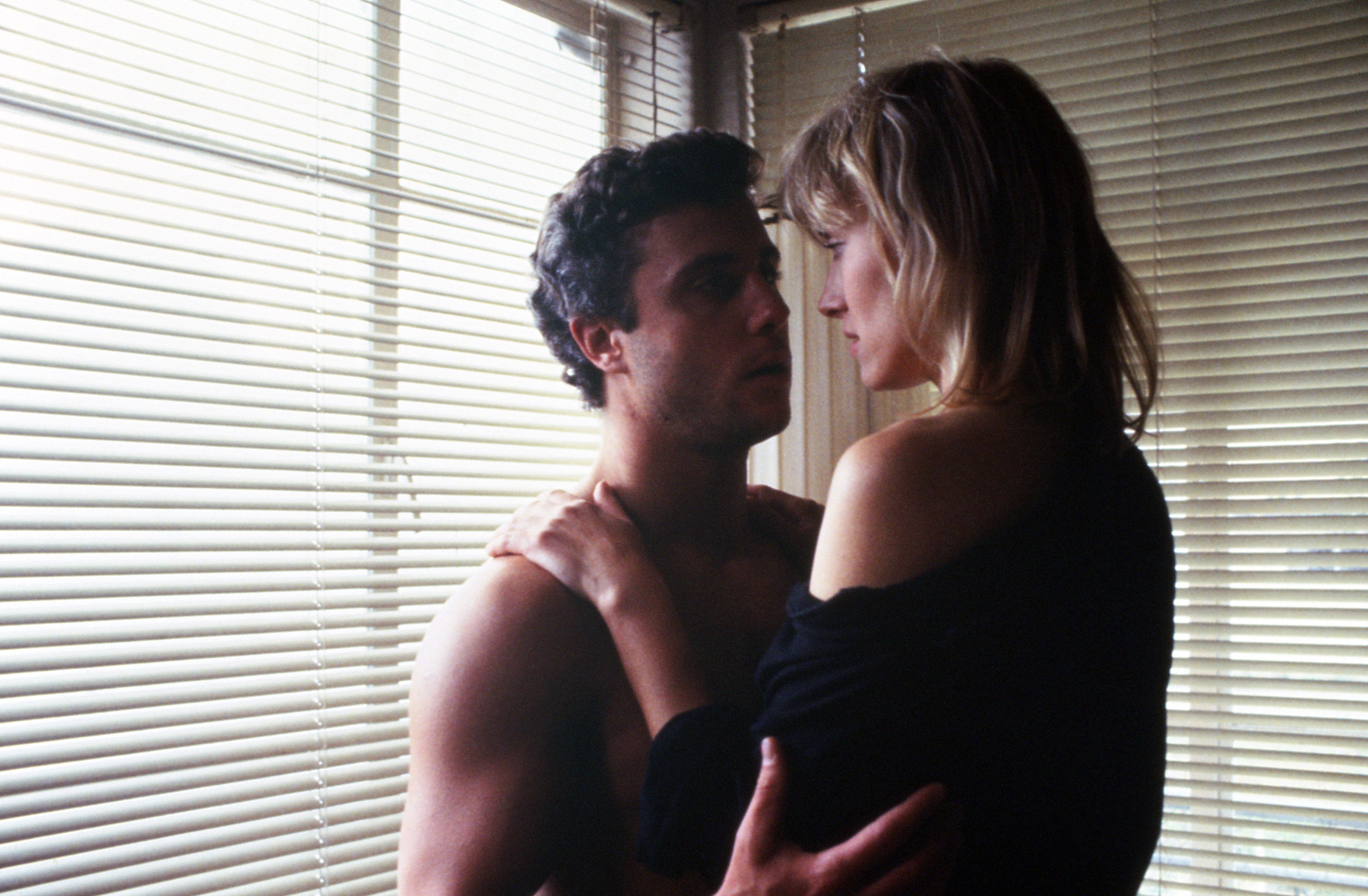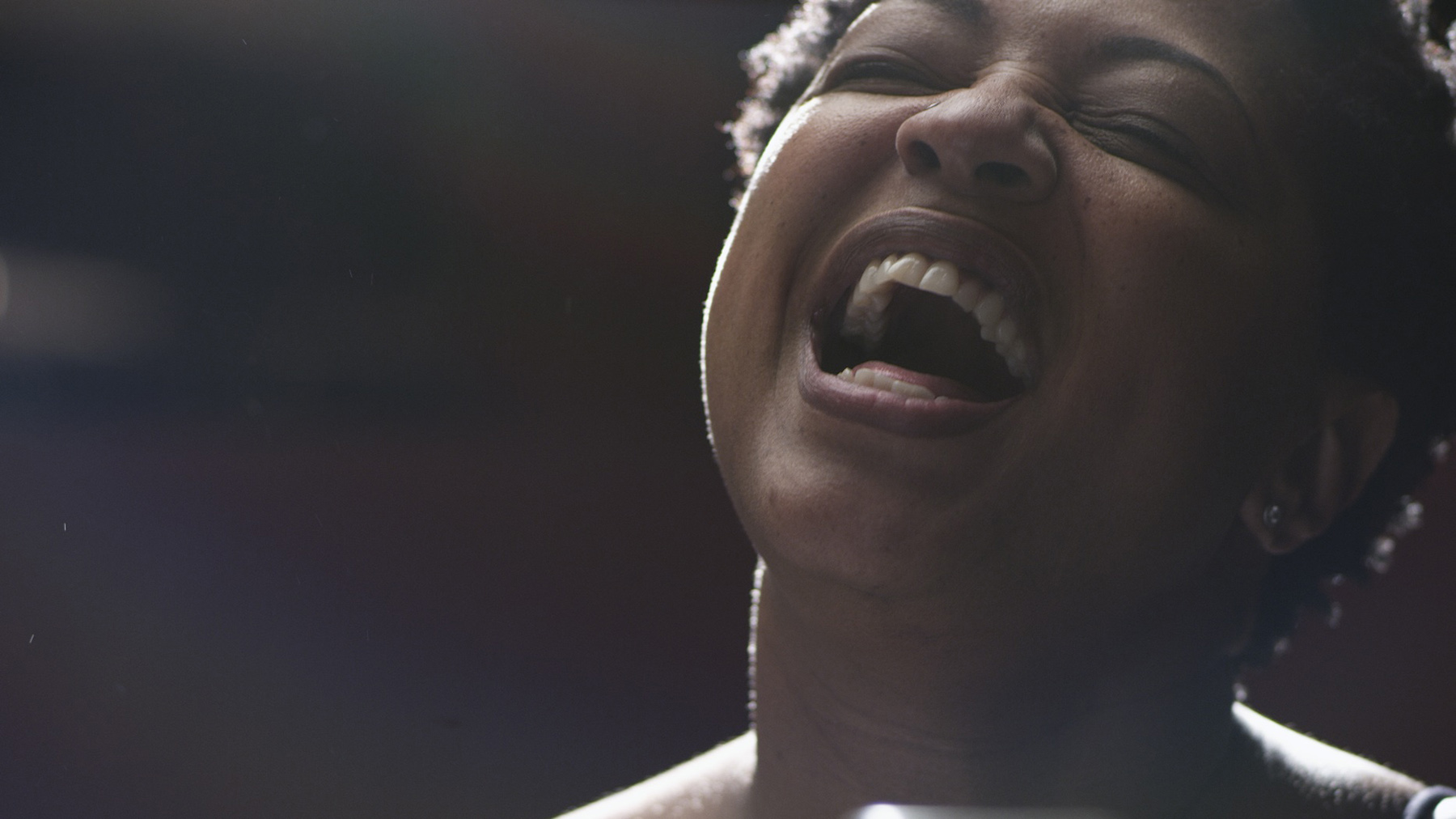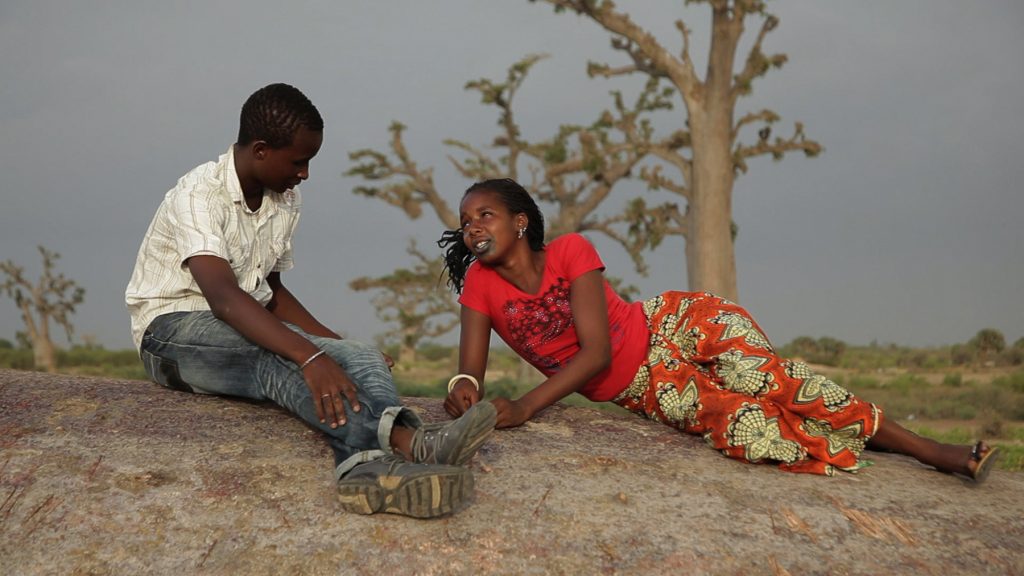As the Cannes Film Festival was unveiling the titles in its sixty sixth edition, the San Francisco International was closing its fifty sixth. Both venerable institutions enduring more than half a century, the former tends to generate more than enough controversy and conversation to last the calendar year and the latter, which we draw some final notes from here, generates the kind of warmth toward cinema that tends to evaporate on contact with air. Which is why we take a moment to reflect. What follows are four perspectives on 2013’s SFIFF.
To Live and Die Friedkin
It would be absurd to say the SFIFF went Hollywood this year, but it was hard to avoid the big names who made in-person appearances. Philip Kaufman—an independent filmmaker by every measure, even if his many great films starred top-drawer actors and were bankrolled and distributed by Tinseltown studios—was feted with the Founder’s Directing Award and an onstage interview (followed by his still-haunting version of Invasion of the Body Snatchers). He confided that he lived in Europe in the early sixties with his wife, and was inspired by the go-out-and-make-a-film ethos of the New Wave filmmakers.
Kaufman was in the audience for William Friedkin’s “master class,” and saluted with several shout-outs. It wasn’t so much a class (in case you’re wondering why Kaufman was in attendance) as a witty succession of insightful, self-deprecating anecdotes about the making of, among others, The French Connection, The Exorcist and the episode of the Alfred Hitchcock Hour Friedkin directed early in his career. He was at the festival for a revival of To Live and Die in L.A., although the Chicago native is everywhere these days touting his new, well-received memoir, The Friedkin Connection.
Harrison Ford (the Peter J. Owens Award for Acting) and Eric Roth (the Kanbar Screenwriting Award) also took the stage for sit-down interviews, though the diligent festivalgoer must have heard these veteran artists through the curdled, frustrated perspective of Steven Soderbergh, who delivered the annual State of Cinema address the first weekend of the SFIFF. His talk began as a kind of meditation on the way movies and media are received and perceived in the iPad world, but turned into a proclamation on the difficulty of making “cinema” in a Hollywood system where few executives know and love movies, and even fewer are willing to buck conventional wisdom and take risks with respect to marketing and distribution (not to mention the conception, casting, form and content of the movies themselves). Although entertaining, Soderbergh misjudged his audience of world cinema connoisseurs and missed an opportunity to talk about the future of storytelling, and whether he envisions Europe remaining a bulwark against the systematic demolition of cinema at American hands.
You might expect that Finnish curator, archivist and programmer Peter Von Bagh, founder ofthe Midnight Sun Film Festival and recipient of the Novikoff Award, would tout the pleasures of cinema (and he did), but even his formative movie memories involved American movies.
On the world cinema front, highlights included the deadpan intro and knowing Q&A by Iranian writer-director-actor Ali Mosaffa after The Last Step, a time-shifting portrait of a veiled romantic triangle that displayed a masterful understanding of how audiences watch and process movies without being self-reverential, ironic or (worst of all) cute.
The Act of Killing, which is making the rounds of the spring festival circuit before a hit-and-run theatrical opening in late summer (only because there aren’t large enough audiences for real-life sociopaths, not to mention ethically complicated documentaries to keep the film in theaters longer than a week in most cities), sent audiences out the door hungry to talk about what they had just seen. In the Fog, a moral parable by the astonishing Belorussian filmmaker Sergei Loznitsa set during World War II, will prove even harder to catch up with in this country, but is worth the effort for fans of subtle, ambiguous films that ask you to interpret, decipher and judge on the fly.
—Michael Fox
Crystal Fairy: Cartwheeling to Center Stage
My party and I were a little too casual in getting over to opening night of Crystal Fairy. We arrived in time to get in, but only to the orchestra level of Kabuki House One, as the twenty one-and-over balcony section was already completely full of more provident patrons with a thirst to match our own. Even down in the orchestra it was not easy to find a seat, and I ended up in the second row to the far left, right in front of the podium where SFIFF’s lead programmer Rachel Rosen introduced New York–based Chilean filmmaker Sebastián Silva and his star, Michael Cera. Silva explained that the title is the name of a real person from San Francisco he’d met years ago. The story was based largely on his own experience, making it, he estimated, about eighty percent true. He asked if anyone knew Crsytal Fairy, and if so to make sure she knew there was a film out that she helped inspire. Cera characterized the project simply as a Craigslist ad.
Then came the movie, which entirely made up for my disappointment over not getting to share my seat with a bottle of pinot noir. Silva’s gorgeously shot little road film is a warm and hilariously authentic account of youthful cruelty and, as the director later put it in the Q&A, the discovery at last of compassion. It’s a shrewdly simple tale of an obnoxious young American (a very astute and winning Michael Cera, aptly antsy, arrogant, and grand as the bounding American 20-something) on a mescaline outing to the Chilean coast with a group of three native buddies (Silva’s own charmingly down-to-earth brothers) and an unwanted hanger-on, the eponymous American hippy chick (a wonderfully ingenuous, multifaceted, and unforgettable Gaby Hoffman).
Rachel Rosen and her Festival guests all came back after the screening, though Rosen didn’t have to do much. She looked happy at the opportunity to relax in the wings as Silva and Cera cartwheeled onto center stage, flashed a little skin, plunked down a small potted cactus reminiscent of the hallucinatory San Pedro featured in the film, and called out for questions. The best one, they promised, would take home the plant.
In the end, a guy with a question about a demon head that flashed momentarily on the screen got the cactus, and I got my drink—tequila with a Corona chaser—just up the street at Dimples. Everyone was a winner.
—Robert Avila
Art Matters
The five films I saw in SFIFF 56 invoked the adage “film what you know.” I took in three docs with European or American directors who focused on human subjects in Asia, each revealing that crossing cultures isn’t as easy as it looks. Rent a Family, Inc., by Danish director Kaspar Astrup Schröder concerned a beleaguered Japanese man’s unusual business—supplying faux family members to other troubled souls wanting to pad their wedding guest lists or negotiate with exes. The narrative, however, fails to reveal the cultural conditions that would make his services necessary, or illuminate the ethical dilemmas he faces from hiding his vocation from his spouse, a situation revealing the proprietor’s own eroding marriage.
Chimeras, a meandering Finnish doc on two generations of Chinese contemporary artists and their vastly different economic realities, expressed an outsider view. Director Mika Mattila, who worked as a cameraman in China, admitted he let the material dictate the course of his narrative, which unfolds too slowly, and without enough insight into the international art world, or Chinese culture to be edifying. The director’s humble in-person admissions (including that he never much thought about China before getting a gig there) served mainly to reveal he had little real insight into the culture he’d infiltrated.
Japanese culture, to Westerners, is a tough nut to crack, as is also demonstrated by Cutie and the Boxer, a Sundance favorite that suffers from a similar lack of understanding. American filmmaker Zachary Heinzerling offers a look into the life of married Japanese émigré artists (he an 80-year old who makes boxing glove action paintings, she a much younger comic-inspired painter), tracking their semi-dysfunctional relationship, in a handsomely shot, though perfunctory manner. In the Q&A, the youthful director couldn’t quite make a good case for a feature length investigation—he just didn’t seem to have the life experience to offer enough insight into Japanese identity or an aging relationship.
I wanted to appreciate Before You Know It, a profile of three aging gay men and how they manage the phases of their life, but director PJ Raval, himself an energetic young gay male, may have empathy for his subjects, but a limited purview—his three interviewees offered too small a range of personalities and conditions—the kind of health, economic, emotional issues that you only truly understand when you hit middle age. And that made for strangely uninvolving cinema.
The target, however, gets hit in The Search for Emak Bakia, Spanish filmmaker/journalist Oskar Alegria’s quirky first-person investigation into a 1926 Man Ray film. Alegria revels in and trusts chance, and the digressive nature of his subjective cinematic research is transparently superfluous and utterly charming. Unlike Chimeras, which attempts some cultural criticism, Search is all about the journey, which the director experienced, and knows how to share.
—Glen Helfand
Re-Making Your Own Micro-Festival
Some years back I became quite fond of Chris Fujiwara’s assertion that any film festival that features more than 200+ titles and extends for over two weeks will necessarily foster micro film festivals composed of individual schedules selected by cinephiles for any of a number of reasons: some schedules are shaped by monetary concerns, chosen to maximize whatever amount a person can spend on the festival; others are shaped by genre; others by national origin; others by the schedule alone; while others faithfully follow favored auteurs. For several years now my focus has been on national cinemas, predominantly from the Global South, which I watch with dutiful completism. This year was no different. I had my schedule graphed out and printed out for quick reference with a list of titles ready to be checked off.
But, this year at the San Francisco International Film Festival (SFIFF) I found myself listening more and more to the recommendations of others as we were waiting in lines, and to the pitches tossed by filmmakers in the press lounge and—as a consequence—I changed my schedule repeatedly, often on the spur of the moment, to catch a film I had not originally intended to see. The results were winning, unexpected surprises.
Morgan Neville’s Twenty Feet from Stardom (2012) emerged as the first substitution. With Merry Clayton and Tata Vega accompanying the director to the festival, the film took on an appropriately spectacular dimension, defusing my initial rationalization that—since it was going to open theatrically anyway—there was no need to catch it at the festival. Hearing Clayton and Vega offer an acapella number to their audience proved a festival highlight. I knew straightaway that it was going to win the Audience Award for Best Documentary Feature (I was right), and I predict as well that it’s bound for Oscar track, with every chance of winning that race. It’s a cultural and historical survey made all the more heartfelt for showcasing the music of my youth and reintroducing same to a new generation.
Another film I rationalized off my list because it would soon open theatrically was Sarah Polley’s Stories We Tell, where the initial response from the first screening was so enthusiastic that I couldn’t resist changing my schedule to attend its second screening. Perfectly capturing the way we structure memories to tell stories to ourselves about our lives, while skillfully rendering the theme through reconstructed home movies shuffled throughout with actual archival footage, Stories We Tell proposed that there’s always something a little meta about memory, if not a bit of sibling rivalry between memory and storytelling.
I met Marcelo Lordello in the press lounge and his quiet charm and humility convinced me to check out his Brazilian feature They’ll Come Back (2012), competing for the festival’s New Directors Prize. With deft delicacy, Lordello offered a portrait of a young girl from a privileged class coming to terms with the social inequities in her country and he did so by sticking very close to his subject, watching her face, her reactions, such that her transformation into a more compassionate person proved a fully satisfying development.
I met Jeremy Teicher while waiting for the first talks at the A2E OnRamp Lab where he synopsized his film Tall as the Baobab Tree (2012), also in the New Directors competition, and intrigued me for complicating the definition of a national cinema. Arguably one of the most African films in the festival, Teicher is white, viewing life in a Senagalese village from the outside, albeit with rich collaboration from those living in the village. But how is a film like this to be understood within entrenched understandings of what constitutes a national cinema? And how will it fare among programmers who use national cinemas to promote the international initiative of their festivals?
I was talked into watching Sebastián Silva’s Crystal Fairy when I learned Michael Cera was accompanying the film and—what at first I felt was going to be an uncomfortable treatment of an ugly American in Chile—swiftly escalated into a hilarious, laugh-out-loud mescaline-fueled romp through the desert, with Cera demonstrating yet again his signature comic timing and Gaby Hoffman entrancing as a spaced-out hippie chick seducing the cosmos to mask dark issues within. The Q&A after the film proved as entertaining as the film itself.
Finally, another filmmaker I met in the press lounge who convinced me to watch their film was Oskar Alegria whose semi-experimental documentary The Search for Emak Bakia surfaced as my favorite film from this year’s festival. Honoring Man Ray’s formal filmic experiments with his own more emotional, lexical, and whimsical parallelisms, The Search for Emak Bakia surprised me with its circumambulating peregrinations, through this topic then that, building upon itself through a passionate curiosity that sparked ideas and elicited deep feelings; a thoroughly unique spectatorial experience that I decided to watch a second time, and which I plan to watch a third time when it screens next week at San Francisco’s Basque Cultural Center. The extra delight of this surprise favorite? Alegria and I befriended each other and are in negotiations to create a Basque Film Festival in Boise, Idaho.
So let it be said, change your schedule. The festival awaits you to discover its secrets.
—Michael Guillén
Edtor’s note: Visit Fandor to see more films that have played the Cannes and San Francisco International film festivals.










